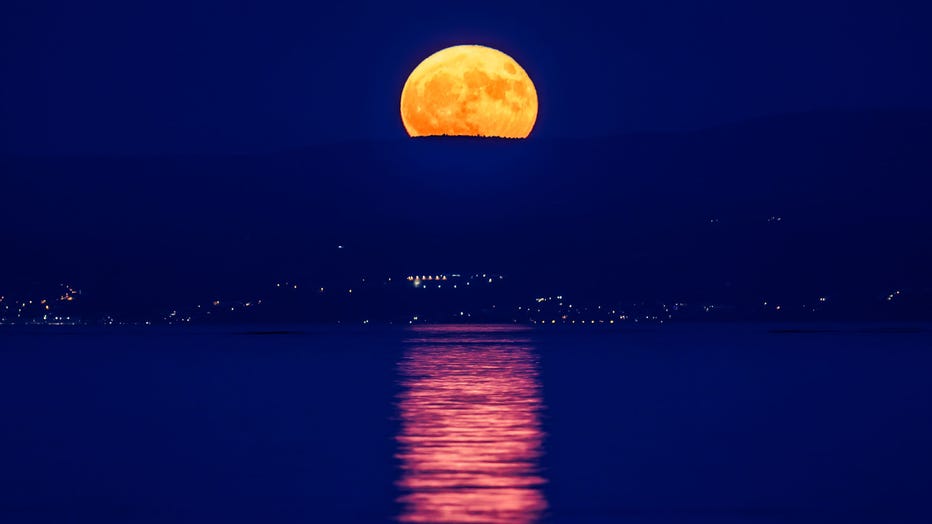Full buck moon to light up the sky this weekend: What to know
July’s full buck moon will be visible all weekend long if conditions in your area are conducive to stargazing.
According to NASA, the July 2024 full buck moon will peak at 6:17 a.m. Eastern time on Sunday, July 21, but the moon will appear full for about three days – from Friday evening through Monday morning.
Here’s what to know about the full buck moon.
Why is it called a ‘buck’ moon?
The ‘buck’ moon title is tied to male deer antlers, according to the Farmers Almanac. Male deer antlers begin to grow in late spring, growing as fast as a fourth inch per day or one and one half inches per week. They’re the fastest growing bones in the world.
RELATED: Moon caves could house future astronauts, scientists say
The lengthening daylight in spring triggers hormones that start the growth each spring. Buck antlers can be seen "in full velvet" come July, but deer shed their antlers after mating season, and buck antlers typically lose their velvety coating closer to mating season in the fall.

Full moon known as the Buck Moon rises above Split, Croatia on July 3, 2023. (Photo: Zvonimir Barisin/PIXSELL/DeFodi Images via Getty Images)
The July full moon is also referred to as the thunder moon because of frequent thunderstorms in early summer.
What else is the July full moon called?
NASA ordered to give moon its own 'time zone'
The Biden administration has given the space agency until the end of 2026 to hammer out a new "time zone" specific to the moon. LiveNOW from FOX's Josh Breslow spoke with Professor Catherine Heymans, Scotland's Astronomer Royal about the reasons behind this.
Europeans call this full moon the Hay Moon for the haymaking of early summer, according to NASA, and sometimes the Mead Moon. Mead is made by fermenting honey mixed with water, sometimes adding fruits, spices, grains, or hops.
Hindus, Buddhists, and Jains call it the Guru Full Moon (Guru Purnima), "a time for clearing the mind and honoring the guru or spiritual master," NASA says.
RELATED: China planning asteroid re-direct mission for planetary defense test
Theravada Buddhists celebrate this full moon as Asalha Puja, also known as Dharma Day or Esala Poya, an important festival celebrating the Buddha's first sermon after reaching nirvana, which started Buddhism.
When is the next full moon?
The August full moon – also known as the Sturgeon Moon – will peak on Monday, Aug. 19. The August Sturgeon Moon will be the first supermoon of the year – it will look brighter and larger than other moons.
July 2024 stargazing events
The morning of July 31, 2024, the Southern Delta Aquariids (005 SDA) meteor shower is expected to peak with the best views from the Washington, D.C., area happening from midnight until about 2 a.m., according to NASA.
RELATED: NASA crew leaves Mars habitat after 378 days inside
"This shower is one of the most active annual sources for the Southern Hemisphere, but viewing it from our more northern latitudes will be difficult," NASA says.

